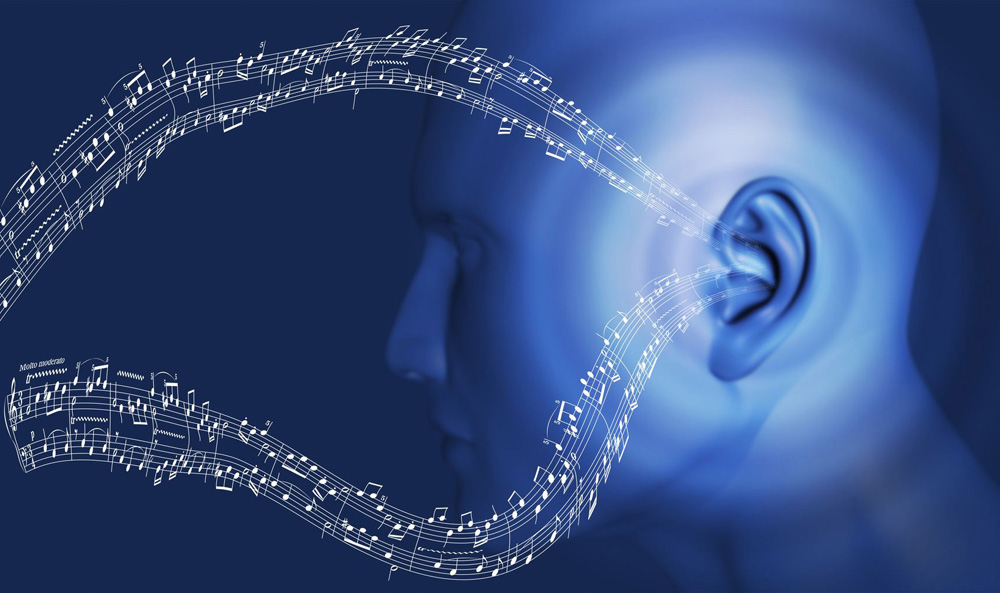How often do you listen to music? I don’t mean throw some tunes on in the car or play the radio in the background, I mean really listen; the kind of listening where you give the music your full attention, focusing on the qualities of individual sounds and noticing things which are not immediately obvious. That distant layered guitar chord; the faint timbale in the background; the different harmonies of the violins. The nuances of the reverbs, the tuning of the drums, the positioning of sounds within the stereo image.
How often do you do that? If you’re aspiring to be a successful professional sound engineer, I hope the answer is “a lot.”
This is the art of critical listening, the vital skill which every mix engineer needs whether in the recording studio or TV suite, at front of house or behind the monitor desk. Anywhere you find yourself with your hands on the console, you need the ability to zero in on sounds with Jedi-like focus to discern what they add (or not!) to the overall mix.
Only then can you begin to manipulate them to enhance the experience – because simply adding more and more sound sources indiscriminately can leave you with a nasty audio “mud” from which it’s difficult to extract yourself. It’s a skill that’s honed over time, but the good news is that can you start anywhere, with no fancy gear whatsoever.
Getting Into It
In fact, you can begin right now by listening to lots of different styles of music on lots of different loudspeakers and headphones. Never gotten into classical, reggae, country or samba? Give them a try! Usually listen to downloads in the car or on headphones? Beg or borrow a decent pair of domestic loudspeakers and play a favorite album on CD or vinyl. Clear your space of all other distractions and just listen. Prepare to be amazed at all the details you never noticed before. You can make it a game by writing down every sound you identify (if you don’t know the instrument, don’t worry, just describe the sound – it’s for your eyes only).
Then try drawing a picture of the stereo image as though it’s on a movie screen. Is there a guitar sound to the left? A cello to the right? Are some things higher in the air, or nearer to the ground? Do you feel like some sounds sit further back, or closer to you? Do you perhaps start to feel that the stereo image is more 3D, than flat left and right?
Did you just blow your own mind? I know I did the first time I tried it – I can still remember the exact room I was in, and that was 25 years ago! Doing plenty of listening practice puts you a step ahead when you’re eventually behind the console.
As an engineer, a smart move before working with a band is to get a copy of the proposed set list and listen to the songs, many times over. Obviously if you’re mixing several bands for one day only at a festival then this isn’t practical, but if you’re doing repeat gigs then it’s really helpful to understand what the original song sounds like and what the musicians are used to hearing. You won’t necessarily try to recreate that – a monitor mix is functional as well as pleasant to listen to – but the reference point is invaluable.
The Communication Angle
There’s another sort of listening that’s also vital, particularly for monitor engineers, and that’s the art of listening to what your artist is telling you. This is where we get into the realms of sound engineering as psychology.
There’s great importance in developing trust between the monitor engineer and musicians, and a great way to inspire that (after doing pre-production homework and introducing yourself in a friendly and confident fashion) is to really listen to what they’re telling you. (A wise person once said that we have two ears and one mouth for a reason!)
Make eye contact, give them your full attention, and check anything you didn’t quite understand. Repeat key words back to them in order to make sure you’ve got it. This not only gives you a better shot at meeting their needs quickly, but also helps them to feel heard – and believe me, that is a huge part of forming trust. You know those people who make you feel like you’re the only person in the room? Be one of those people!
Of course, the tricky part of monitor engineering is making every person on stage feel like that simultaneously, and if they’re all talking to you at once, that’s no mean feat! Use the “one at a time, but I see you” approach – stay with the person you’re talking with, but give the interrupter a nod or say “I’ll be right with you John” (or whoever). As soon as you’re free, it’s “Now, John, what can I do for you?’
After a few times they’ll generally stop jostling for position, because they come to trust that they’ll get their turn. Of course, there are often inter-band politics to deal with, and sometimes you’ll be caught in the crossfire of ego contests. Experience teaches you how to deal with those, but by staying calm, methodical and professional, you won’t go too far wrong.
Many musicians aren’t good at describing what they need to hear, so it’s also imperative to learn to decipher their requests, and again this comes with practice. Comments like “my voice feels muffled” can often be addressed with microphone technique and EQ (more about that coming up), but simply being curious is the way to get clues – if you don’t understand what they’re getting at, ask open-ended questions: “Can you tell me more about what crunchy/breathy/purple feels like?” (Yes, people do come up with the oddest descriptions!)
This has the added benefit of helping them to feel that you’re on their side and again, it builds trust. As a monitor engineer, the relationship with the band really is of prime importance – when they feel that you’ve got their back, they can relax and get on with their job of playing a great gig – and that’s what it’s all about!
Merging Spheres
Mixing sound is both an art and a science, a collaboration between the feeling, intuitive right-brain, and the analytical, logical left-brain. With that in mind, let’s examine how to separate different audio elements within a mix, and I’ll describe how I EQ individual inputs. It’s by no means the only way, but in 20-plus years of trial and error I’ve found this method to be the most efficient and effective for me.
Monitor mixes need to be easy to play an instrument to/sing to as well as sound good. They particularly need to provide clear, functional information about pitch and timing, so it’s worth considering what is supplying useful information to a monitor mix, and what is unnecessary filler.
For example, some sounds are useful for an artist to pitch to or time to, or they carry a signature riff within the song; other sounds might create a pleasing fullness for FOH but reduce the clarity of a monitor mix and make it hard to play along to. This is especially true when it comes to hard-drive tracks – some elements are more useful than others. Sounds like strings and percussion are typically pretty helpful, effects might be less so.
Pre-fade listen (PFL) is your friend when it comes to identifying different sounds, particularly when multitracks are involved, because the sounds are likely to change from song to song. Frequent PFL’ing of the inputs will lead to familiarity with what’s coming in, helping you to identify useful audio information.
Additional Advice
Judicious use of the most basic of EQs – a high-pass filter (HPF) – goes a long way to eliminating unnecessary frequencies that can muddy a mix, and it’s my first port of call in the EQ process. Consider the range of frequencies that each sound exists within and where the defining characteristics of that sound lie within the audio spectrum.
Let’s take hi-hat as an example – there’s not much useful information in the lower frequency ranges, and in fact the mic is picking up spill from the rest of the kit – so it’s good to clean up and get rid of the extraneous low stuff. My approach is to set an HPF at around 600 Hz for cymbals, but try it for yourself – solo the mic, use your ears and see what you think.
Follow the same process with the other inputs, and tidy up anything that isn’t providing useful audio information – play around and consider where you might set hi-passes for different drums, vocals and so on.
You can do the same thing with low-pass filters (LPF), but be careful. A bass guitar, for example, is primarily low frequencies, but if an LPF is set too low, you’ll lose a lot of the “attack” – the finger-on-string sound that gives a bass its definition – because that sound is actually quite high up in the frequency spectrum. (Try boosting a bass guitar in the 5kHz region and see what you notice.)
Likewise vocals – most of the action is in the 300 Hz to 3 kHz range, but set the filters there and you’ll lose low “body” as well the “super Ks” – the very high harmonics that give a sound its “air.” So listen, listen, listen and experiment.
Making Sonic ID
Identifying frequencies is obviously a vital tool for sound engineers, and learning this skill really is just practice and repetition. I spent many hours in a PA company warehouse with a mic and a graphic EQ, making a wedge feed back and gradually learning what different frequencies sounded like.
Once you’ve got a decent idea of that, it’s time to start to refine your skills using the parametric EQ on the channel strip of the desk, and this is the next EQ tool after the HPF for the inputs. My preferred way to precisely locate a frequency is to solo the (muted) input on cans/in-ear monitors, set a filter with a tight bandwidth or “Q” around the frequency I’m looking for, and boost it quite hard, say, by 10 dB.
Then I sweep the filter up and down slightly until the frequency I’m listening for me pops out, and with that identified, I can then reduce or boost it as appropriate (close your eyes as you do this if you like, to make sure you’re really are using your ears and not letting your assumptions fool you).
You might want to keep the Q really tight if it’s just one frequency that’s over or under-represented (which is what I’d usually do with toms), or you may choose to do a big old scoop. My typical kick drum EQ has a wide low boost for “boom,” a wide, high boost for “thwack,” and a wide gap in the mids where there’s nothing useful or sonically pleasing going on.
Approaching EQ like this means that you start to carve an audio landscape, with different instruments occupying different areas of the frequency spectrum. In my experience it gives a nice clarity and “separation” to a mix – the opposite of audio “muddiness.” It’s all about trial and error, so grab every opportunity to play around.
The advent of virtual sound check playback systems has made it easier than ever to refine skills, so if you’re lucky enough to have access to such a system, make use of it. Tip: most high-end console manufacturers have demo rooms set up with exactly that, and are usually very amenable to potential end-users coming to try out their equipment, so don’t be shy about calling them up and arranging a session. It’s a great way to hone your craft as well as to learn different desks, and make contacts.















